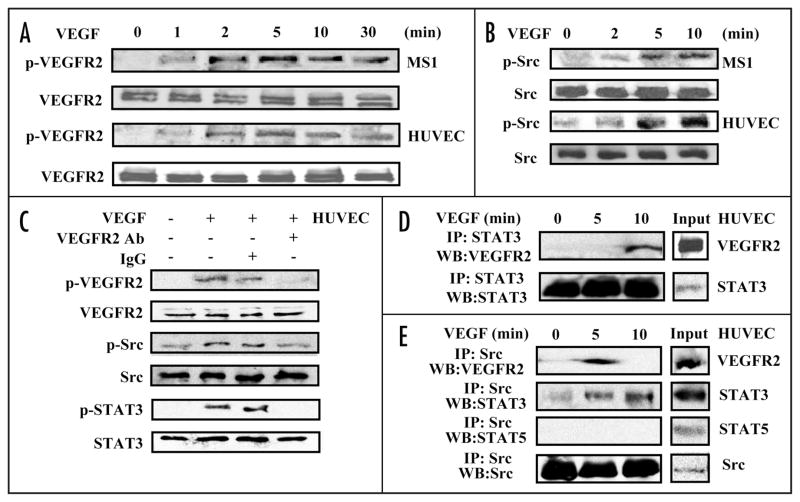Figure 3.
VEGF induces endothelial cell VEGFR2, Src and STAT3 activation and intermolecular association. HUVEC and MS1 endothelial cells were cultured in medium containing 0.5% serum for 24 hours and then cultured in medium containing 10 ng/ml VEGF for different durations. Western blots of the lysates were probed with antibody specific for phospho-VEGFR2, stripped and reprobed for VEGFR2 (A), and probed with antibody specific for phospho-Src, stripped and reprobed for Src (B). HUVEC cells were pretreated with anti-human VEGFR2 inhibitory antibody (1 μg/ml) or IgG (1 μg/ml) for one hour and were stimulated with 10 ng/ml VEGF for 10 min. Western blots of the lysates were probed with antibody specific for phospho-VEGFR2, phospho-Src, phospho-STAT3, stripped and reprobed for VEGFR2, Src and STAT3 (C). HUVEC lysates were immunoprecipitated with anti-STAT3 antibody and Western blots of the precipitate were probed with antibody to VEGFR2, stripped and reprobed with antibody to STAT3 (D). HUVEC lysates were immunoprecipitated with anti-Src antibody and Western blots of the precipitate were probed sequentially with antibodies to VEGFR2, STAT3, STAT5 and Src (E). All experiments were performed twice with similar results.

